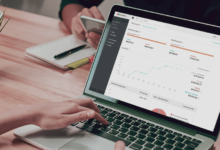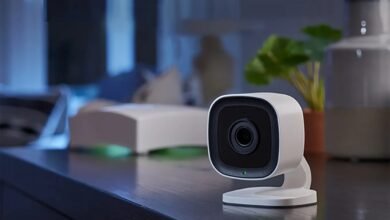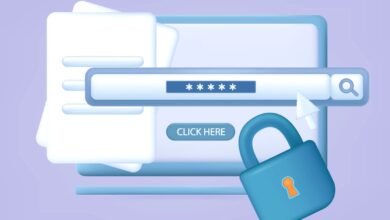People are rethinking how they make money online as a result of Facebook’s outage

After Monday’s outage, influencers who previously relied on Instagram and Facebook to connect with fans, advertise, and sell products are reconsidering where they post material. The outage occurs as Facebook and Mark Zuckerberg increase their investment in content development in an attempt to court influencers from platforms such as TikTok.
Lakinya Francis is establishing a LinkedIn profile, Haley Sanchez is growing her email list, and Michael Elefante is expanding the functionality of his website.
“We become fixated on what works, which is good, but we also need a backup plan, especially now that we rely so much on technology,” said Francis, who owns a consulting company that assists individuals in earning money from vending machines.
Influencers who have long relied on Instagram and Facebook to communicate with fans, market, and sell items are reconsidering where they post their material in the wake of Monday’s outage of the company’s services.
Related: How to Fight Against Fake Profiles on Facebook?
For this story, CNBC spoke with ten online entrepreneurs and small business owners that utilize Facebook’s Instagram, WhatsApp, or a combination of the three. Each of their projected losses from purchases, affiliate links, sponsored posts, and product launches ranged from a few hundred to over $5,000 during Facebook’s outage.
It demonstrates the extent to which Facebook controls the online economy. Even a brief downtime results in losses for businesses and individuals who rely on Facebook services to conduct business or advertise their products. However, a six-hour outage that set a new record is much worse.
Zuckerberg’s investment in creators and small businesses
Santosh Janardhan, Facebook’s vice president of infrastructure, apologized for the widespread outage in a late Monday blog post. Janardhan attributed the outage to “configuration modifications on the backbone routers,” but did not identify what changes occurred.
Facebook’s tools are used by over 200 million businesses, and several content providers rely on Instagram for sponsored posts, affiliate links, and sales money. And the downtime occurred as Facebook and CEO Mark Zuckerberg make a concerted effort to entice and recruit creators from TikTok, Snapchat, and other social media sites.
Instagram launched Reels, a short-form video feature, last year to compete with TikTok, and Zuckerberg just announced that the firm would pay $1 billion to users who create content for both Facebook and Instagram through 2022. Additionally, Facebook stated that it will not take a share from creator services such as online events and fan subscriptions until 2023, and in April introduced new opportunities for creators to earn money on Instagram.
“Investing in creators is nothing new for us, but I’m delighted to see this work grow over time,” he wrote earlier this year on Facebook.
Along with a refund, Facebook and Instagram should offer something akin to double exposure to advertisers who pre-paid on Monday, according to Michael Heller, CEO and creator of Talent Resources, a marketing organization that works with influencers.
According to Alexa Vogue, vice president of brand partnerships at TTPM Influencer Talent Management, the majority of firms and influencers with campaign posts scheduled for Monday have delayed them to Tuesday or even Friday in case of technical difficulties. A failure on YouTube or TikTok, where her clients are compensated on a per-view basis, would have resulted in greater financial loss, she adds.
“Yes, it was a wake-up call,” she remarked, “but in the larger scheme of things, effective influencers will always be successful.”
The need to diversify
Numerous creators and small companies cite Instagram as their preferred medium. It’s simple to communicate with people via direct messages and tales, and it provides a more targeted group of loyal followers that convert to sales.
The majority of respondents indicated they would now focus on expanding their website and diversifying the platforms they use, according to influencers CNBC spoke with. During the closure, some businesses used Twitter, TikTok, and email to boost sales and interact with audiences.
Francis, who owns a consulting firm, intends to leverage LinkedIn and email lists, a strategy that assisted her in closing some deals during Monday’s downtime.
Sanchez, who owns a small candle business, had the interruption at a busy season leading up to the holidays. She frequently use Instagram to identify products, communicate with consumers via stories, and direct traffic to her Shopify store.
“That is where I conduct business,” Sanchez explained. “I am not generating hundreds of sales daily. Although I am a little candle company, this is my full-time occupation. Therefore, even if I make three sales that I may lose, it is significant to me.”
She used Monday to interact with consumers and grow her email list in preparation for future disruptions, allowing her to communicate with customers more effectively.
Elliott Elkhoury, who sells resources to real estate investors, thinks he lost between $3,000 and $5,000 on Monday due to the lack of traffic to his platform and social media, as well as the inability to run advertisements.
Heller believes Monday’s losses totaled hundreds of millions of dollars in advertising and branded content. The financial impact on clients was likely between $3 million and $4 million, he adds.
Michael Elefante, who owns and operates short-term rentals and teaches others how to do so, estimates that affiliate links and paid mentorships cost between $1,500 and $2,500. He is now concentrating his efforts on direct mail and his website.
John Eringman, a provider of financial content with over 50,000 Instagram followers and 1.2 million on TikTok, estimates he lost a few hundred bucks. This was achieved through book sales and one-on-one coaching sessions conducted via his Instagram.
Eringman expanded his business by establishing a TikTok account and a website. However, if the outage continued into Wednesday, he risked losing $2,500 on a sponsored Instagram and TikTok post.
“Social media has a shelf life,” he explains. “Ensure that you own your audience rather than allowing Facebook or Instagram to do so.”











